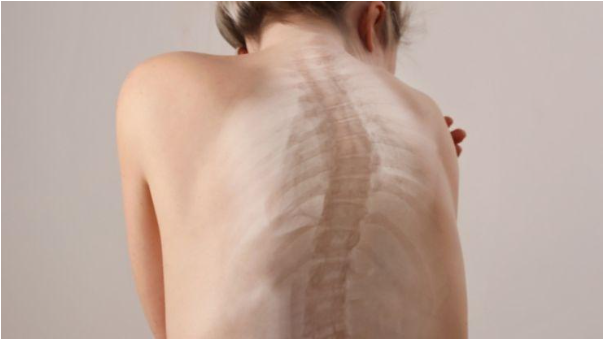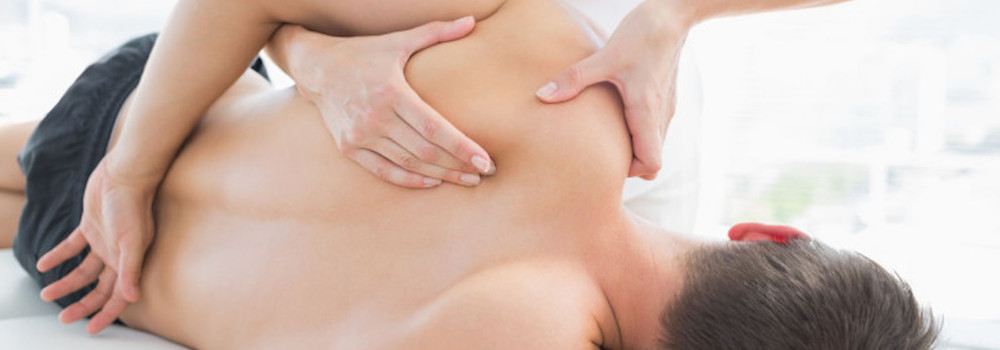Osteopathy and Scoliosis: Gentle Support for a Healthier Spine
Scoliosis is a sideways curve of the spine. It can cause uneven shoulders, tight muscles, or back pain. Some people notice it early in life, while others feel symptoms later.
Osteopathy offers gentle, hands-on care to help your body move and recover.
What Is Scoliosis?
Scoliosis means the spine forms an “S” or “C” shape. It often appears during growth, especially in teenage years. Adults can also develop scoliosis due to posture, injury, or aging.
The curve can be mild or more visible. Some people feel only light stiffness, while others deal with pain or fatigue. Each case is unique, so treatment must be personalized.
How Osteopathy Helps with Scoliosis
Osteopathy focuses on how bones, muscles, and tissues work together. When the spine curves, balance changes. Some muscles become tight; others weaken. This can affect movement, breathing, and posture.
An osteopathic practitioner uses gentle manual therapy to:
- Improve spine and joint mobility
- Release muscle tension
- Support postural balance
- Reduce stiffness and pain
- Help the body move and breathe better
The goal is to improve how your body functions every day.
Techniques Used in Osteopathy
Osteopathy uses light and safe touch. Each movement aims to restore natural balance and mobility.
Common techniques include:
- Soft tissue release – relaxing tense muscles
- Joint mobilization – freeing blocked areas
- Myofascial release – easing restrictions in deep tissues
- Cranial osteopathy – supporting calm and fluid body function
- Gentle stretching – improving flexibility and posture
These methods promote better body alignment and comfort. They also help prevent fatigue and postural strain.

Osteopathy for Teenagers
Scoliosis often appears during adolescence. As the body grows quickly, the spine may twist or curve. This can cause discomfort, stiffness, or reduced flexibility.
Osteopathic treatment helps teens adapt to these changes. It supports postural development and spinal alignment during growth. Gentle sessions can also reduce stress and improve body awareness.
Regular osteopathic care helps teenagers stay active, flexible, and confident as their bodies change.
Osteopathy for Adults with Scoliosis
Adults often feel pain from years of compensation. Tight muscles and restricted joints can limit daily movement. Osteopathy helps by improving musculoskeletal balance. It restores flexibility and relieves tension around the spine.
Even small improvements in mobility can make a big difference in comfort and posture. Osteopathy also supports spine rehabilitation for adults recovering from surgery, injury, or chronic stress.
What Research Suggests
Studies show that manual therapy can reduce pain and stiffness linked to scoliosis. Osteopathy follows similar principles — restoring motion and supporting natural body function.
While osteopathy doesn’t straighten the spine, it can help reduce tension, improve mobility, and ease discomfort safely and naturally.
What Happens During a Session
Each session starts with a full assessment. Your osteopathic practitioner observes your posture, movement, and breathing. They gently test areas of restriction or imbalance.
Treatment involves light, precise touch. You may feel stretching, pressure, or rhythmic movements. Many people describe the session as relaxing and grounding.
After the session, you might feel looser, calmer, or notice easier motion. You may also receive simple home exercises or postural advice to maintain results.
Whole-Body Benefits
Scoliosis doesn’t affect only the spine — it changes how your ribs, shoulders, and pelvis move too. Osteopathy helps all parts of the body work together again.
Better alignment supports energy, breathing, and circulation. It also reduces stress on joints and muscles. With consistent care, many people experience better comfort and recovery in daily life.
When to Try Osteopathic Care
Osteopathy can help if you notice:
- Uneven posture or tilted shoulders
- Back or neck pain that keeps returning
- Tight muscles or stiffness when moving
- Difficulty sitting, standing, or sleeping comfortably
- Fatigue from poor posture or imbalance
Early care supports long-term comfort and healthy spine function.

Frequently Asked Questions (FAQ)
1. Is osteopathy safe for children and teenagers?
Yes. It’s gentle and adapted to growing bodies. It supports natural development and postural balance during growth.
2. How many sessions will I need?
It depends on your body, age, and goals. Some people feel relief after one session, while others benefit from regular follow-ups for lasting results.
3. Does osteopathy replace medical treatment?
No. Osteopathy supports your recovery but does not replace medical care. It complements other therapies like physiotherapy, exercise, or medical supervision.
4. What should I expect after a session?
You may feel lighter, calmer, or slightly tired. Drink water, move gently, and allow your body to adjust for 24 hours.
Take Care of Your Spine — Naturally
Scoliosis affects more than posture — it influences how you move, breathe, and feel. Osteopathy offers gentle, effective care to restore comfort and confidence in your body.
If you or your child live with scoliosis, book a consultation at Urgent-Osteo Clinic today.
Let’s help your spine move freely, your body feel balanced, and your days become easier — one gentle treatment at a time.